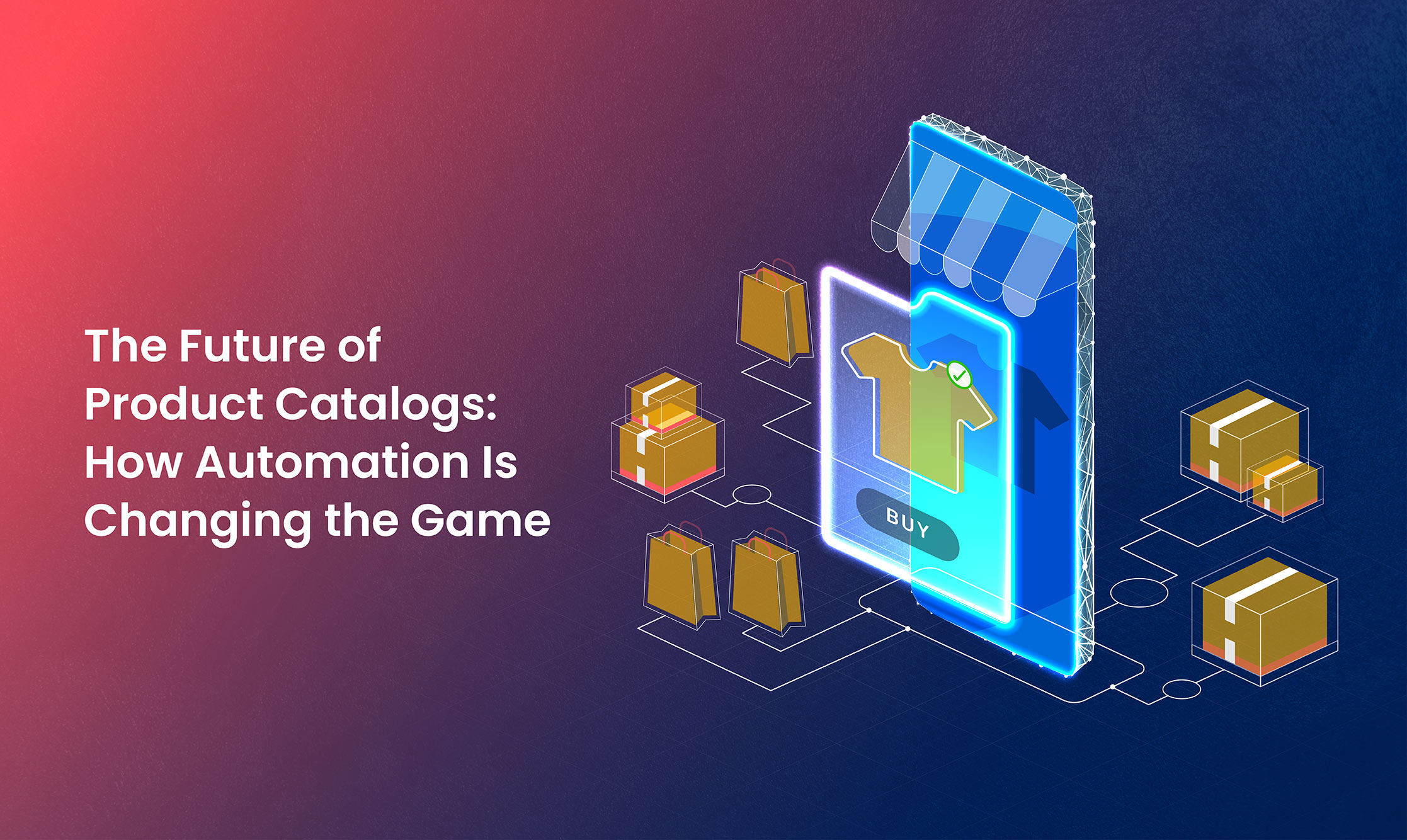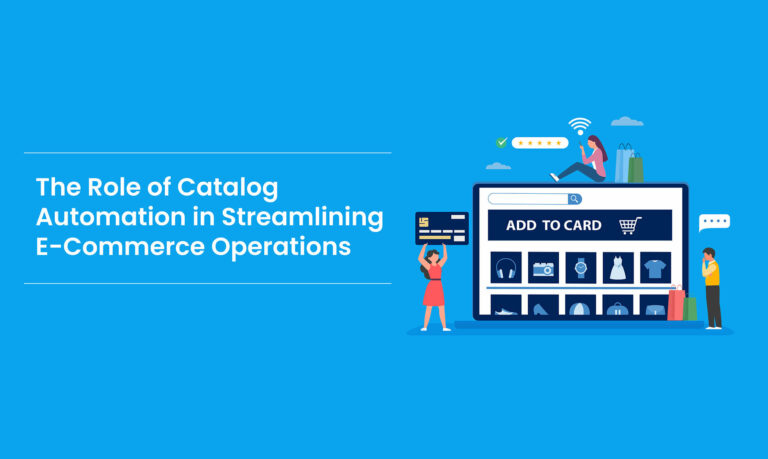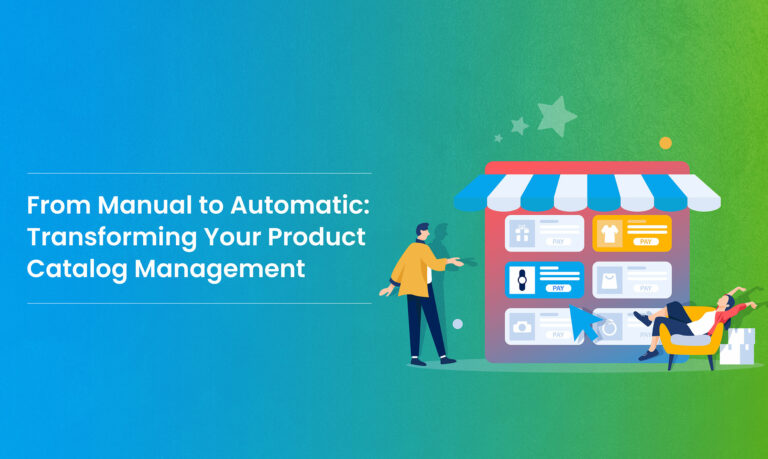In today’s fast-paced business world, staying ahead means more than just having great products. For e-commerce businesses, managing product catalogs effectively is crucial to boosting sales and reaching business goals.
However, the old-fashioned manual way of handling products isn’t enough anymore. That’s where Artificial Intelligence (AI) comes in. It’s changing the game, transforming how product catalogs are handled and improved.
As consumers increasingly turn to online shopping, the importance of presenting products effectively and efficiently has become paramount.
In this article, we delve into the future of product catalogs and how automation is transforming the game for businesses worldwide.
Understanding Catalog Automation
Catalog automation is the utilization of technology and software to provide up-to-date product, image, and price information across several channels. Businesses may create consistent, accurate, and efficient control over their product catalogs with the aid of catalog automation. With the use of this technology, retailers may display their items more conveniently, and the fast food chain has an immediate opportunity to adapt to changes in the market and client preferences. Increasing client happiness and streamlining processes are two of inventory management’s main goals in the contemporary retail business environment.
The Future of Product Catalogs: What’s Coming!
Let’s go through the upgrades in product cataloging that are changing the game as we speak:
1. Interactive and Immersive Experiences:
- The online catalog will also offer augmented and virtual reality solutions so that clients can see and get a feel for the goods.
- Engage the buyers to secure benefits like conversion and engagement.
2. Personalization for Targeted Marketing:
- Creating a demand using data analytics and targeting the most responsive audiences for advertising.
- Increased conversions and an improved consumer experience.
3. A mobile-first strategy:
- Mobile device-optimized catalogs that load quickly and allow for easy navigation.
- Being responsive on mobile devices is essential for drawing in and keeping consumers.
4. Integration with E-commerce Platforms:
- A cohesive shopping experience with the smooth integration of catalogs and e-commerce platforms.
- Increased conversion rates and a simplified purchasing process are anticipated.
5. AI-Powered Catalogue Management:
- Product classification, tagging, and content creation are automated using AI.
- Enhanced effectiveness, precision, and customized suggestions.
6. Voice Search Optimization:
- Using read-aloud tactics or AdWords optimization for voice search to generate voice-based purchase cases.
- Collaborate on creating and implementing discoverability using natural language search queries.
7. Improved Analytics and Insights:
- Making use of cutting-edge analytics to monitor performance and identify patterns.
- You may choose the right product package and improve the customer experience by using data to inform your business decisions.
Importance of Catalog Automation in Pricing Decisions
Catalog automation helps in making pricing decisions in the following ways:
- Real-time product performance, market dynamics, and rival pricing data are provided.
- It will enable companies to adjust compensation appropriately over time in response to changes in the market, competition, and demand.
- The choice of pricing strategies aids in identifying the point at which profit is maximized and exhibits competitive behavior.
- Reduces the possibility that a product listed across many channels and platforms may have pricing differences. It maintains the prices set by the retailers.
- Streamlines the cost-determination process for companies, saving a significant amount of time and money.
Common Challenges
1. Data Integration Complexity:
Given that different information from several sources tends to be saved in a single catalog management system, this can be quite complex and tedious. It means collecting information like product details, images, prices,, and other things from lots of different external places, such as suppliers, manufacturers, and local databases.
Impact on Business: Fall behind in real-time messaging and product listings, which makes it challenging to create consistent images throughout channels. It may result in customers being dissatisfied as they receive different or outdated information from various sources. In addition, this may lead to lost sales.
2. Quality Assurance:
It is challenging to have complete and correct product data and images in this digital-oriented environment, especially with the big product catalog lines. This control necessitates careful scrutiny and correction of product information and ensuring that the information provided is up-to-date and accurate.
Impact on Business: The case of inaccurate products may foster a situation of no customer loyalty because the clients might lose both confidence and trust in the brand name; thus, they will respond by bringing reduced sales and creating a bad brand reputation. Customers may return or give an unfavorable review of the product if they have any of the following products that are different from what is shown in the description or image provided.
3. Cost of Implementation:
As to the catalog automation software, the expenditures can get to be tricky and quite challenging, at least for small and medium-sized businesses. It requires a one-time purchase of software licenses and hardware infrastructures and the training of team members.
Impact on Business: Limitations in available resources might prevent your business from developing a catalog automation system that could be outcompeted by more modern competitors who use an automated system. This would possibly lead to a lack of automation, which would result in low efficiency and a long time for product launches.
4. Technical Challenges:
The catalog automation tools may also suffer from some technical problems, including system incompatibility with the existing IT infrastructure, bus software errors, and system downtime.
– Impact on Business: Technical problems such as this cause the termination of the update process of product information and pricing, thus creating a huge delay in the product update program. This might cause sales and customer satisfaction to go down rather than during the peak periods or when a marketing plan is launched.
5. Data Security and Privacy Concerns:
Maintaining the highest top-level security system, which hackers or any security breaches cannot compromise, including data compliance violations.
Impact on Business: Security flaws in data operations may cause a company’s brand to suffer, and the organization will have to dish out huge sums of money due to regulatory fines and court settlements. Furthermore, customers will lose trust in the company. The business is also likely to face stringent regulations alongside legal sanctions for any willful misuse of private information.
6. Resistance to Change:
Labor automation using catalogs might be problematic because of employees’ fear of losing their jobs, insufficient training, or unwillingness of staff to embrace new technology.
Impact on Business: The hurling to adopt the advanced catalog automation systems is a conflict when implementing these projects, and hence, it is an expenditure of time to see the real benefit of automation projects. For companies, it becomes important to address employee concerns and give training and other support that enable employees to ease the process of adapting to automated procedures.
Conclusion
In summary, retaining a competitive edge in today’s fast-paced industry, improving customer experience, and increasing sales all depend critically on the efficient administration of product catalogs. Businesses can enhance data accuracy, expedite response to market demands, and streamline operations by realizing the value of catalog management and implementing automation tools and techniques.
Businesses must understand the importance of catalog automation in terms of improving product visibility, price decisions, and channel consistency. Businesses can overcome typical obstacles and realize the full potential of their product catalogs by putting the advice mentioned into practice.In order to stay ahead of the curve, companies must embrace technology and use catalog automation solutions. They will be able to take advantage of fresh chances for expansion, creativity, and achievement in the dynamic retail sector by doing this. Explore the benefits of catalog automation and streamline your business operations with Rubick.ai. Discover how our advanced automation tools can revolutionize your product catalog management and help you stay ahead of the competition.


